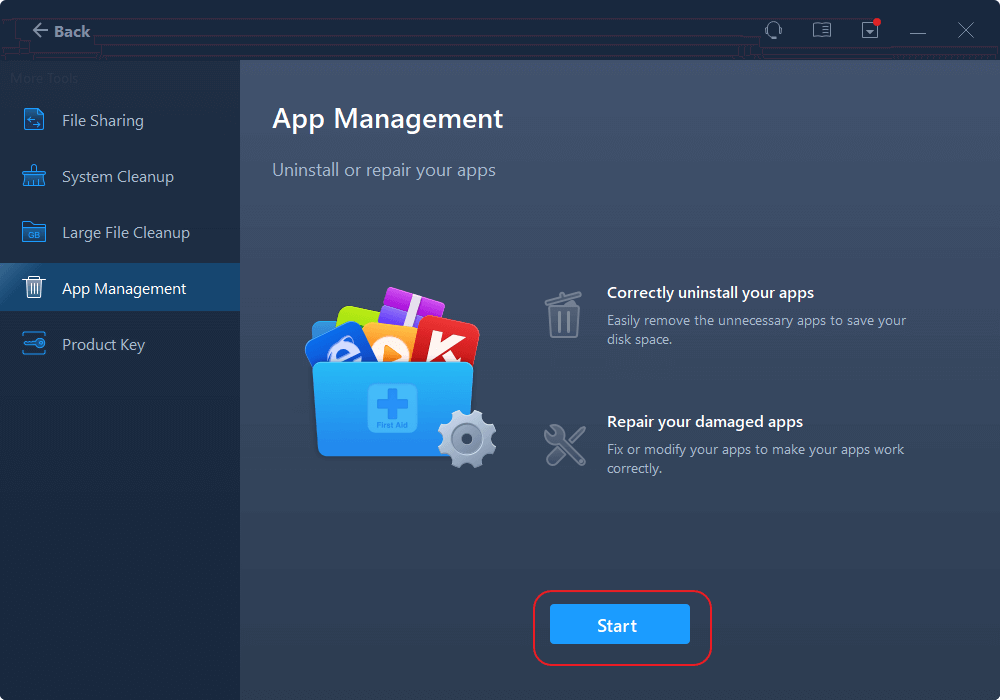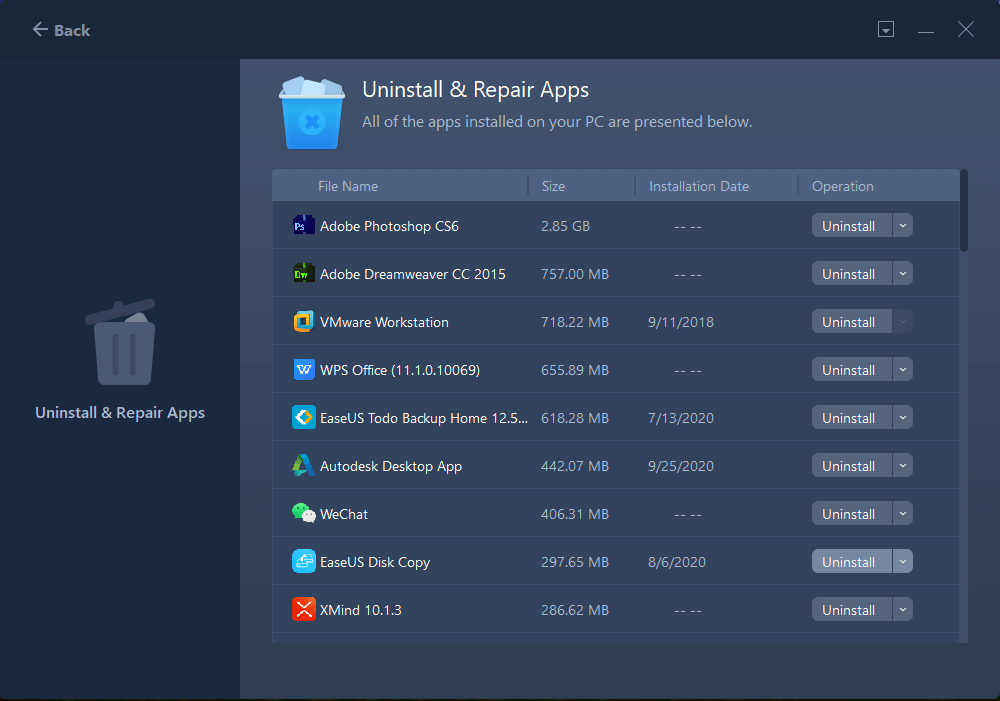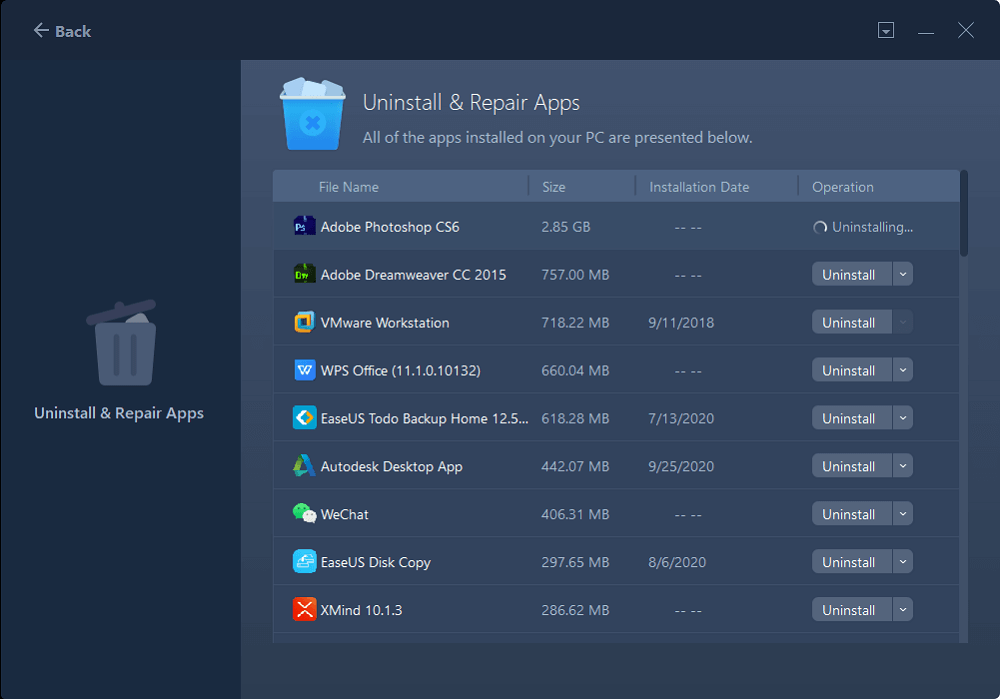Page Table of Contents
Reviews and Awards
There are instances where uninstalling Steam from your Windows PC becomes necessary. So, How to uninstall Steam without losing games or how to perform a full uninstallation? Whether it's to make room for a new operating system, transition to another gaming platform, or take a break from digital downloads, this guide from EaseUS offers solutions tailored to your needs.
We will delve into two different methods for uninstalling Steam. If you intend to reinstall Steam in the future while preserving your game collection, we'll demonstrate the safe steps to do so. Conversely, if you bid farewell to Steam and wish to remove it along with all associated data, we've got you covered.
How to Uninstall Steam Without Losing Games
Since Steam games are linked to user accounts, uninstalling the Steam client doesn't result in losing access to your games. You can simply log into Steam and re-download your games whenever needed. If you don't want to spend time re-downloading them again, check the guide below.
- Notice:
- You need to create backup saves and configurations for games that don't support Steam Cloud with a backup tool.
Here, we divide the uninstalling process into three phases:
- 1. Move the steamapps folder to a safe location
- 2. Uninstall Steam
- 3. Reinstall Steam and restore games
1. Move the steamapps folder to a safe location
This step is necessary for those facing some problems in their Steam and want to uninstall and reinstall to solve the issues. So, moving the steamapps folder to a safe location ensures you have a backup of your Steam games.
Follow the steps:
Step 1. Go to your Steam folder (Default directory: C:\Program Files (x86)\Steam).

Step 2. Find the steamapps folder and move it to a different location for backup.
Now let's uninstall Steam Windows, follow the steps:
Step 1. Quit Steam and close games to prevent it from running in the background. If the Steam icon is in your taskbar, right-click and select "Exit Steam."
Step 2. Press "Windows" + "I" simultaneously to open Settings and go to Apps.
Step 3. Find Steams in Apps & features, click on it, and then choose "Uninstall."

Step 4. Upon confirmation, a message will prompt stating, "This app and its related information will be uninstalled." Proceed by clicking the "Uninstall" button.
3. Reinstall Steam and restore games
If you want to reinstall Steam and restore games, follow the steps:
Step 1. Navigate to Steam's About page, then click on the "INSTALL STEAM" button displayed on the main screen.
Step 2. Once the Steam app is reinstalled, launch it, log into your Steam account, and close the Steam.
Step 3. Transfer the contents of your backed-up steamapps folder to the corresponding steamapps directory within the newly installed Steam folder.
Step 4. Restart Steam and the client will automatically detect and acknowledge the presence of the pre-existing game files.
Step 5. If your games show "INSTALL," click on the button, and Steam will automatically detect game files in the steamapps folder. Then, the button will be transferred to "PLAY" immediately.
If you want to transfer Steam and games to another drive, EaseUS Todo PCTrans can do it quickly. The following article contains a simple guide to this tool, which allows you to migrate applications and data seamlessly.

How to Move Steam Game to Another Drive 2024
In this page, we will show you 3 practical ways to move a single or multiple Steam games to another drive, whether it's HDD, SSD or fusion drive. Read more >>
How to Uninstall Steam Completely from Your PC
If you no longer need Steam or any of your installed games, you can completely remove them from your system. While the manual uninstalling process of the entire Steam and its games seems simple, it could be complex for most users because a simple uninstallation doesn't remove leftover files and caches. For a streamlined and comprehensive uninstall process, consider using EaseUS Todo PCTrans Free.
This free and handy uninstaller goes beyond simply removing the Steam application. It also offers you a clear window to view and uninstall the Steam games on your PC, along with their relevant files.
You can do this with just a few simple clicks using EaseUS Todo PCTrans.
Step 1. Launch EaseUS Todo PCTrans, click "More Tools". Choose App Management, Click "Start" to securely uninstall your apps and repair your damaged apps.

Step 2. All of apps installed on your PC, choose the selected one you want to uninstall or repair. (If your uninstall process fails, you can click the small triangle icon and select "Delete".)

Step 3. Click "Uninstall". (If you want to repair apps, click the icon right behind "Uninstall" and choose "Repair".)

🚩Read also:
Conclusion
Whether you're looking to uninstall Steam without losing your games or completely remove Steam and its associated data from your PC, this tutorial has provided useful methods to meet your needs. With these instructions, you can efficiently manage your Steam installation according to your preferences.
For those who prefer a comprehensive uninstallation, we highly recommend utilizing EaseUS Todo PCTrans Free. This powerful tool offers multiple functionalities for different purposes, from transferring files from PC to PC to removing the Steam application completely in one simple operation. All can help you manage apps and files more efficiently.
We hope this guide has been helpful in navigating the process of uninstalling Steam on your Windows PC. If you found this information valuable, consider sharing this article with your friends who might also need to remove Steam from their systems!
FAQs about How to Uninstall Steam
If you have any queries about the Steam uninstallation process, please refer to these FAQs for answers.
1. Does uninstalling Steam Uninstall every game?
No, uninstalling Steam only removes the program, not your games.
2. Will I lose my data if I Uninstall Steam?
It depends. Some games use Steam Cloud for online saves, but not all of them. So, remember to back up saves for the unsure games before uninstalling.
3. Can I move Steam games to another drive?
Yes! You can either move the steamApps folder manually or use EaseUS Todo PCTrans for a more automated approach.
About the Author
Oliver is an EaseUS professional writer who dares explore new areas. With a passion for solving tech issues with straightforward guides for common users, Oliver keeps honing his writing craft by developing in-depth solutions for disk and partition management, computer boot-up issues, file transfer, etc.
Reviews and Awards
-
EaseUS Todo PCTrans Free is a useful and and reliable software solution created to serve in computer migration operations, be it from one machine to another or from an earlier version of your OS to a newer one.
Read More -
EaseUS Todo PCTrans is by the folks at EaseUS who make incredible tools that let you manage your backups and recover your dead hard disks. While it is not an official tool, EaseUS has a reputation for being very good with their software and code.
Read More
-
It offers the ability to move your entire user account from your old computer, meaning everything is quickly migrated. You still get to keep your Windows installation (and the relevant drivers for your new PC), but you also get all your apps, settings, preferences, images, documents and other important data.
Read More
Related Articles
-
Windows Easy Transfer for Windows XP, Windows 7, Windows 8, Windows 10, and Windows 11
![author icon]() Tracy King/2025/08/07
Tracy King/2025/08/07 -
How to Move Minecraft to Another Hard Drive on Windows 10
![author icon]() Cedric/2025/08/13
Cedric/2025/08/13 -
How to Transfer Youtube Data to Another Account [3 Ways🔥]
![author icon]() Tracy King/2025/08/07
Tracy King/2025/08/07 -
How to Transfer Games to an External Hard Drive - Tutorial
![author icon]() Brithny/2025/08/08
Brithny/2025/08/08